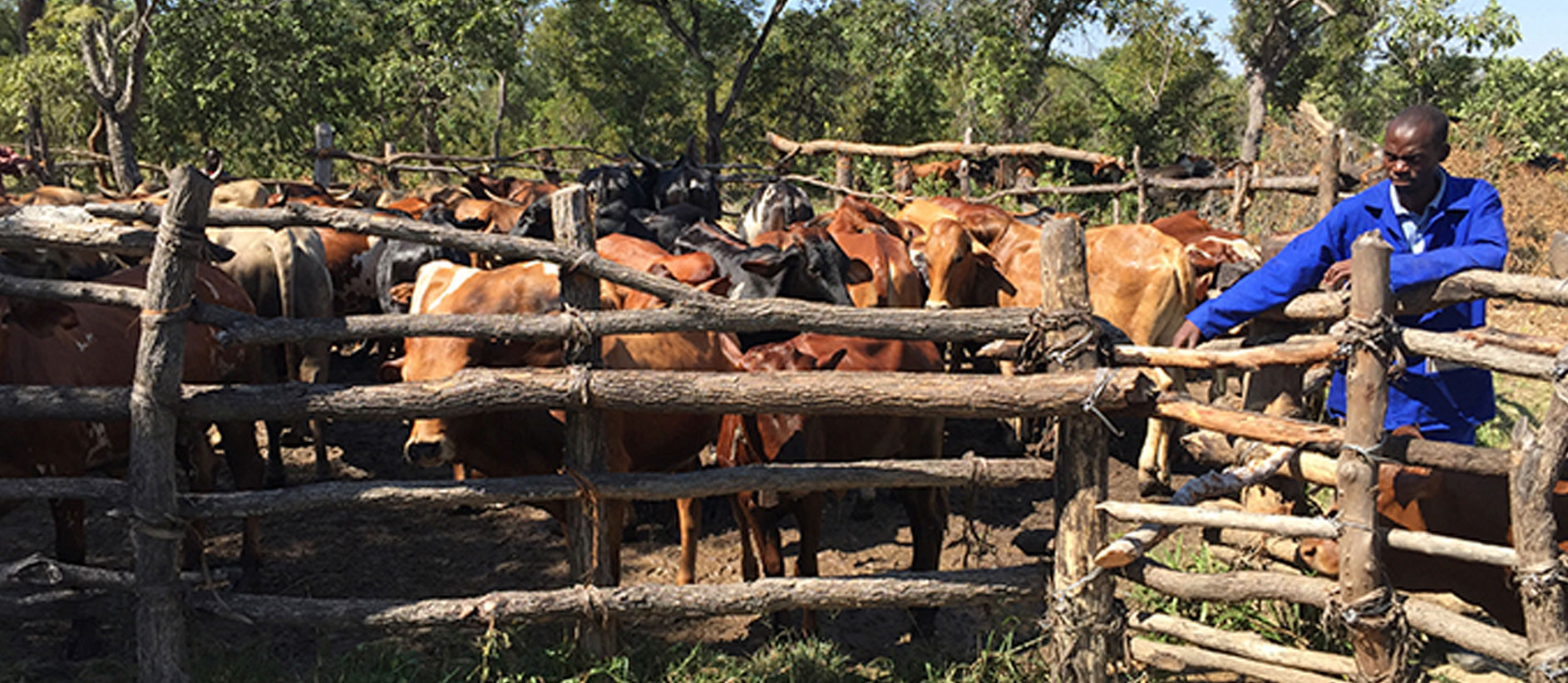It is impressive. After a two-hour drive north east from Livingstone along dusty, bumpy roads one comes upon a newly constructed dam wall. A kilometre long and 19 metres high, it rises from the flat, dry landscape.
– The best cattle-producing areas, such as Southern Zambia, are generally drier than others, and we wanted to improve water security as well as be able to plant pastures and produce fodder for our cattle, said Mark Winwood, the General Manager of Silverlands Ranching.
40,000 lorry loads of soil went into the wall, providing capacity for up to 14 million m3 of water. An 11 km electricity transmission line has also been put in to power the dam’s four-turbine pumping station which will move water through the farm’s newly laid irrigation pipes.
Developing the value chain
The Zimba district is cattle country. For generations the local communities have raised cattle on the dry savannah and now the UK based Investment Company SilverStreet Capital (via their Silverlands Fund) has acquired a privately titled ranch, intending to do the same.
The business is based on a growing demand of beef and a market that seeks higher quality cuts of meat.
We see great potential and believe that we can make a good return for our investors whilst at the same time achieving significant social impact by supporting small-scale farmers in the area, said Mark.
In addition to the dam, investments have been made in establishing new infrastructure and bringing in capital stock, including machinery, irrigation systems, developing new cropping areas, roads and housing for the farm’s staff. Furthermore, the company is building feedlots and an abattoir with a capacity of 10,000 cattle a year.
As it is expected that the Silverlands ranch will only be able to produce 2,500-3,000 cattle annually, the ranch must turn to local smallholder farmers in order to purchase cattle.
– We are building feed-lots and an abattoir, but to justify such an investment we need to be able to buy in around 6,000 – 7,000 cattle from the smallholders every year and thereby we are also creating a market for local cattle, said Mark.
Engaging with smallholders
To build a relationship with local farmers the Silverlands team engaged with surrounding communities to help understand where they may be able to help support and improve cattle production.
The key issue identified was the management of disease risk, in particular tick-borne diseases. The communities had not “dipped” their cattle to protect them from ticks for 17 years, and this was resulting in high cattle mortality rates as well as low calving rates.
To help support the surrounding communities Silverlands has entered into a partnership with the Zambian NGO Musika, which is a non-profit organisation owned by six key Zambian agriculture-related institutions, that assists businesses in developing mutually beneficial and transparent commercial relationships. To date, Musika has helped over 110,000 farmers obtain improved market access.
– We are focusing on stimulating private investments and assisting them in being successful and beneficial to the investors as well as to the local community, said Joshua Munkombwe, Operations Director at Musika.
Introducing spray races
Silverlands’ collaboration with Musika to help re-introduce “dipping” of small-scale cattle herds has resulted in the installation of two spray races and the rehabilitation of six dip stations in the surrounding communities. Vaccination and animal husbandry programmes have also been introduced.
The dipping facilities are proving popular, and approximately 6,000 head of small-scale cattle now utilize them on a weekly basis. Five more facilities are due to be commissioned before year end, raising small scale farmer dipping capacity to 12,000 cattle.
Initially Musika paid for the two spray races and cattle handling facilities whilst Silverlands provided a portion of the building materials. The communities have provided labour and the remainder of the materials required for cement work.
The rehabilitation of the dip tanks has been a community driven initiative with Silverlands providing essential materials and technical expertise. Musika has further facilitated the project with the provision of three motorbikes, one for each of the livestock technicians who are employed and paid by Silverlands.
Today, the communities play an active role in the management of these facilities with Silverlands monitoring and providing technical support. Spraying and dipping is charged out by the communities on a cost recovery basis making the dipping programmes sustainable.
– The goals of this programme are to lower mortality rates and to improve calving rates thereby increasing production of cattle from small-scale farmers and at the same time helping our value chain business achieve greater scale. Initially the results are good and some farmers in the communities that we support have seen their cattle mortality rates falling from typically over 30% to under 1% per annum, said Mark.
Benefits for all
Things have come a long way since Silverlands purchased the ranch in December 2012. However, a lot of hard work and continued development of the business is still needed if the full potential of the project is to be realised.
– The development so far has been very positive, but we need to continue our efforts to build up mutual, respectful cooperation with the local communities because our business model requires their partnership, said Mark.

